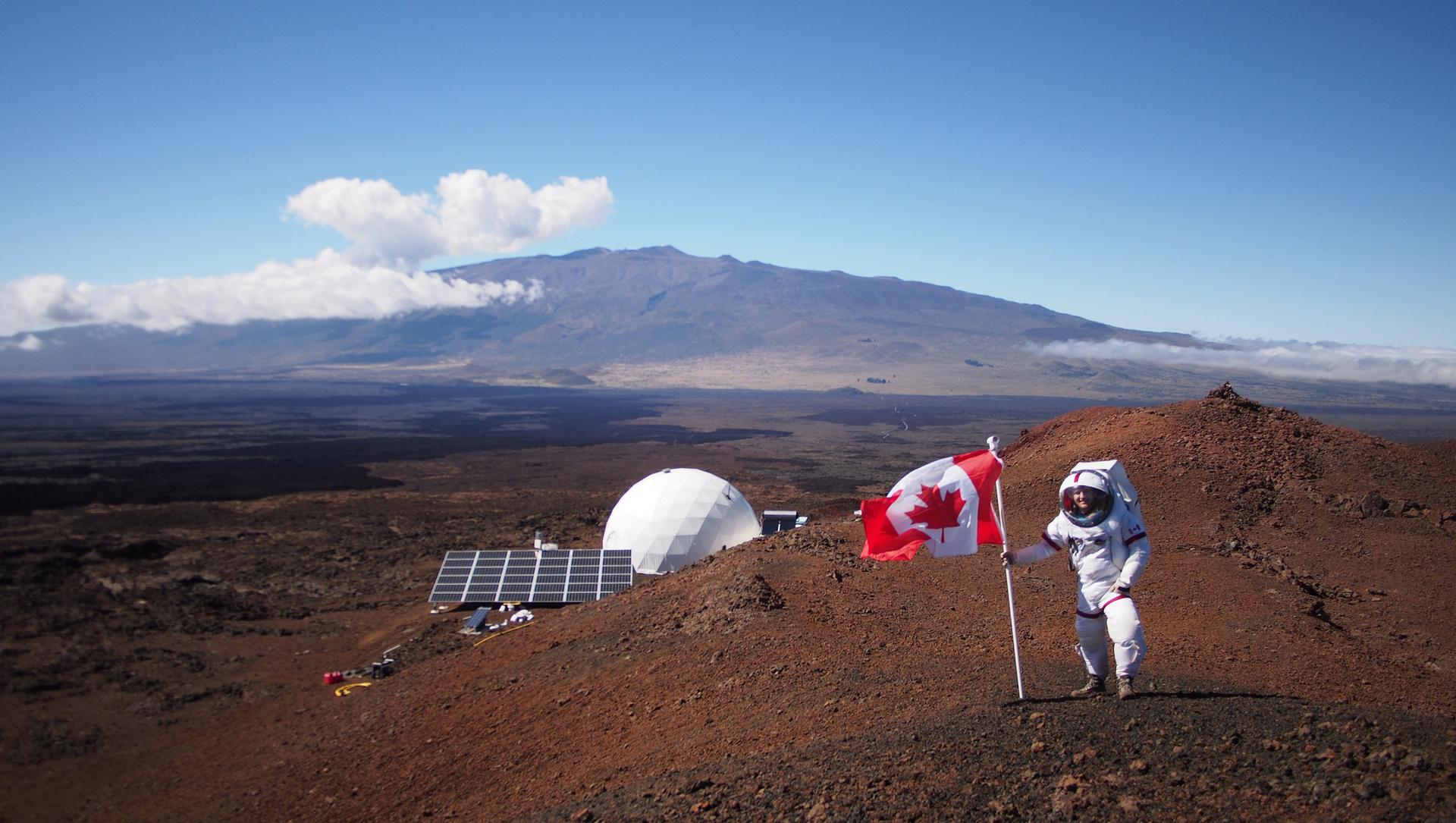What would life on Mars be like? A Canadian scientist spent months in a NASA-built dome to find out
Ross Lockwood plants a Canadian flag on a Hawaiian volcano, simulating what it would be like living on Mars.
Life on Mars or the nearest thing to it. That's what Canadian physics Ph.D. student Ross Lockwood signed up to experience.
He and five other researchers just completed 120 days living in a NASA-built Mars simulator on the slopes of the Mauna Loa volcano in Hawaii.
The researchers lived and worked together in a 1600 square foot dome. Lockwood says the Mars study — the second in the Hawaii Space Exploration Analog & Simulation (HI-SEAS) project — was intended to simulate life in a colony on the red planet.
“The researchers wanted to know about psychology and crew psychology in isolation and how that changes over the function of a long-duration surface mission,” he explains.
And when the team left the dome to explore, they wore space suits.
“There was an incident on one of my space suits during one of our ‘space walks,’ where I tripped over a rock, and the bubble-dome that was protecting my face from the air and the sun, fell off. But it was about 30 milliseconds of fresh air for me.”
On Friday, Lockwood and his fellow ‘Martians’ finally stepped out of the dome without space suits, and breathed in fresh air.
“The thing that I was missing the most from the real world was the feel of wind on my face,” he added.
The team was also happy to eat something other than dehydrated and packaged food.
“We all ordered our favorite food from Earth — so I made sure to order a big rack of ribs.”
Life on Mars or the nearest thing to it. That's what Canadian physics Ph.D. student Ross Lockwood signed up to experience.
He and five other researchers just completed 120 days living in a NASA-built Mars simulator on the slopes of the Mauna Loa volcano in Hawaii.
The researchers lived and worked together in a 1600 square foot dome. Lockwood says the Mars study — the second in the Hawaii Space Exploration Analog & Simulation (HI-SEAS) project — was intended to simulate life in a colony on the red planet.
“The researchers wanted to know about psychology and crew psychology in isolation and how that changes over the function of a long-duration surface mission,” he explains.
And when the team left the dome to explore, they wore space suits.
“There was an incident on one of my space suits during one of our ‘space walks,’ where I tripped over a rock, and the bubble-dome that was protecting my face from the air and the sun, fell off. But it was about 30 milliseconds of fresh air for me.”
On Friday, Lockwood and his fellow ‘Martians’ finally stepped out of the dome without space suits, and breathed in fresh air.
“The thing that I was missing the most from the real world was the feel of wind on my face,” he added.
The team was also happy to eat something other than dehydrated and packaged food.
“We all ordered our favorite food from Earth — so I made sure to order a big rack of ribs.”
